In 1977, Jim Guy Tucker began his term as Arkansas’ Second District representative to the United States House of Representatives. During his two years as Representative, he faced many challenging issues such as the energy crisis, gun control, and welfare reform. The public’s rising concern for the environment became one of Tucker’s main focal points.
Straighten the Cache River?
One of his first environmental quandaries was the Cache River-Bayou DeView Project. The Cache River flows south-southwesterly from northeast Arkansas to the White River. Due to flooding issues, the Cache River area was not as extensively cleared as other sections of eastern Arkansas. The Flood Control Act of 1950 authorized the Cache River-Bayou DeView Project, which would have realigned 140 miles of the Cache to create flood control and provide more farmland for cotton and soybean farmers along the Cache. The project's price tag stalled it until 1969 when Congress approved $60 million. By 1972, seven miles surrounding the mouth of the Cache was cleared and the river were straightened and channelized.
Protesting groups conducting further research discovered deficiencies in the Corps of Engineer's plan. If completed, the project would clear 200,000 acres of wetlands, destroying valuable native hardwood. The groups estimated the the straightening would cause an 85% loss of the river's fishery resources, a degradation of water quality, protentional flooding of the White River, and possible extermination of one-sixth of the United States’ mallard population, which wintered in this area. Additionally, by 1977, the project’s cost has skyrocketed by another $33 million with an annual maintenance cost of $2.7 million. A legal and political battle soon began.
Jim Guy Tucker, an avid hunter and nature enthusiast, reviewed pros and cons and decided that the financial and environmental impact of this project was too detrimental to continue.
Serious questions have been raised about the environmental impact of this project and about the ability to actually secure the mitigation lands proposed to offset wetland losses attributable to the project. There is no dispute about the fact that completion will accelerate destruction of one of the last remaining southern hardwood forests and degrade water quality in the White River as a result of increased silting from a more rapidly flowing Cache. The silt may not only damage the White River Game Refuge but may also mean increased flooding for landowners south of the channelized area. (April 4, 1977)
Funding for the project stalemated in Congress that same year, and in 1986 the Cache River National Wildlife Refuge was created. In 2013, the Nature Conservancy and the Corps of Engineers began working to restore the previously-straightened seven miles of river.
Controlling Cadron Creek
Another environmental project in which Tucker became involved was the Cadron Creek Watershed in Central Arkansas. The plan involved clearing and draining a total of 469,825 acres in five counties. Some areas of the project were to be dammed to help with flood control and improve farm lands in the area. The estimated cost of the project was $16 million.
Some residents and local business owners objected, stating that the cost would be greater than what the government purported and that the damming would affect the environment adversely and destroy hunting and recreational usage.
Tucker again reviewed the issue, this time siding with the project.
Over the past 18 months, I have made every possible effort to study Cadron projects with an impartial viewpoint. I studied the Soil Conservation Service’s (SCS) plans, as well as topographical maps and water flowcharts of the area. I visited farmlands adjacent to the Creek, canoed a portion of the stream and even flew over the entire watershed area. Finally, I made a concerted effort to talk to people on both sides of this issue.
My personal studies and inspections certainly confirmed the scenic beauty and recreational value of this area. They also pointed up the need for water conservation and flood control along the Cadron. As a result, I decided to support the project after elimination of Dam E-4 on the east fork and assurances from the President’s Office of Management and Budget that the project was cost effective. (October 17 1978)
Thoughtful Choices for Arkansas
These two projects in separate areas of the state demonstrate that Tucker was willing to review each project with an open mind, regardless of his personal interests. He weighed the environmental and public cost, making his decision based upon the best interest for the state. In the case of Cache, the environmental damage and monetary cost outweighed the benefit of a handful of farmers. However, the Cadron Creek Watershed project proved more beneficial than detrimental.
We all want to retain the scenic beauty of our natural resources, but at the same time flood control is vital not just to the farmers but to the entire state as well. (May 10, 1977)
